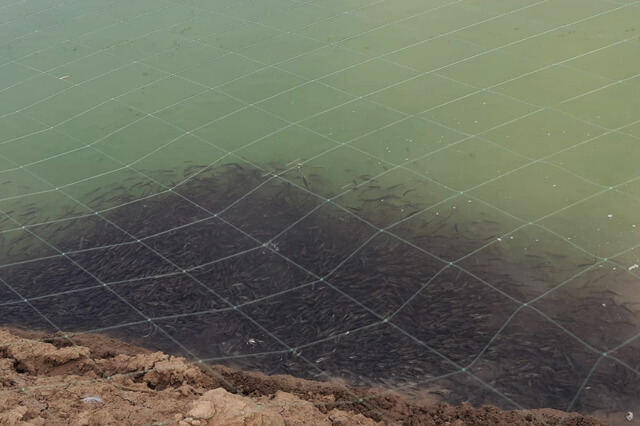How you can start fish farming

Fish farming provides many profitable opportunities today. The raising and selling of fish on a billboard basis have proven to be economically successful. Fish farming is growing in popularity in India. Increasing recognition that fish may be healthy food, low in calories and cholesterol levels, but rich in protein has increased consumer demand in both restaurants and supermarkets. The Consumption of fish products is increasing dramatically.
Fish are excellent animals. They can convert feed into body tissue more efficiently than most livestock, transforming about 70 percent of their feed into flesh. Fish even have excellent dress-out qualities, providing a mean of 60 percent weight as a marketable product and a greater proportion of edible, lean tissue than most livestock. Fish are often intensively cultured in relatively small amounts of water.
Fish farming is, like most other sorts of farming, a risky business that needs special knowledge, skills, and careful considerations. Try to start small-scale fish farming within the beginning and later enlarge it to large-scale fish farming.
Some of the foremost important factors to think about in determining whether you ought to begin a fish farming business are listed below.
If You have:
- Sufficient financial resources available?
- Your own suitable land with a good source of high-quality water?
- Is there a high demand and sufficient market for your product?
- The equipment and machinery necessary?
- Residence near enough for direct observation and security?
- Reliable source of Fish feed and fish-disease diagnostic-help?
Loans and Fish Farming Subsidies in India:
Loans and subsidies are in different forms. A package of assistance is provided to the potential fish farmers under different segments of the schemes by the Centre Govt.
Fish farms or fish farming may be a sort of aquaculture. The act of fish farming is about raising fish commercially in tanks or enclosures for human consumption. There are different types of fish farms that utilize different aquaculture methods.
The first method is the cage system which uses cages that are placed in lakes, ponds, and oceans that contain the fish. This method is additionally widely mentioned as off-shore cultivation. Fish are kept within cage-like structures and are “artificially fed” and harvested. The fish farming cage method has made numerous technological advances over the years, especially with reducing diseases and environmental concerns. However, the amount one concern of the cage method is fish escaping and being loose among the wild fish population.
The second method is ditch or pond systems for raising fish. This basic requirement for this method is to possess a ditch or a pond that holds water. This is a singular system because at a little level, fish are artificially fed and therefore the waste produced from the fish is then wont to fertilize farmers’ fields. On a bigger scale, mostly in ponds, the pond is self-sustaining because it grows plants and algae for fish food.
The third method of fish farming is named composite fish culture which may be a sort of fish farming that permits both local fish species and imported fish species to coexist in the same pond. The number of species depends, but it’s sometimes upwards of six fish species during a single pond. The fish species are always carefully chosen to make sure that species can coexist and reduce competition for food.
The fourth method of fish farming is named integrated recycling systems which are taken into account the most important scale method of “pure” fish farming. This approach uses large plastic tanks that are placed inside a greenhouse. There are hydroponic beds that are placed near the plastic tanks. The water within the plastic tanks is circulated to the hydroponic beds, where the fish feed waste goes to supply nutrients to the plant crops that are grown in the hydroponic beds. The majority of sorts of plants that are grown within the hydroponic beds are herbs like parsley and basil.
There are a number of different fish species that are raised on fish farms, the most common fish spices raised are Rohu, Katla, Salmon, Carp, Tilapia, and Catfish.
Risks and challenges in Fish Farming
- Fish are very sensitive to management, and minor mistakes can lead to degradation or even death of the fish, which can result in a huge loss of income.
- Establishing fish farms is capital-intensive; much more than poultry and Turkey farming. Fish farms require more careful planning and a lot of money. A relatively small fish farm (cage) may require 1 square meter to build, while a larger farm (pond) requires 8.5 square meters.
- Because of production costs, fish from farms cost more than fish from rivers and ponds. So, if there are a lot of farming fish in the market, you may find it hard to sell, because people prefer cheaper fish.
- You will need more than two fish production cycles before you can start making any significant profits from the fish farming business.
Advantages of fish farming
Fish provides very high-quality animal protein for human consumption. Fish development in ponds can be controlled: the farmers themselves choose the fish species they wish to raise. The fish farming in a pond is the owner’s property; they are secure & can be harvested at will. Fish in wild waters are free for all & make an individual share in the common catch uncertain. Fish in a pond are generally close at hand. Effective land use: effectively utilize marginal land, e.g. land that is too poor, or too costly to drain for agriculture can be gainfully devoted to fish farming.
Conclusion
Fish farming in India is such a business that will never evaporate. The Demand for fish is increasing in accordance with population growth and the demand will increase even more in near future. So there’s an honest opportunity for earning and employment from the fish farming business.